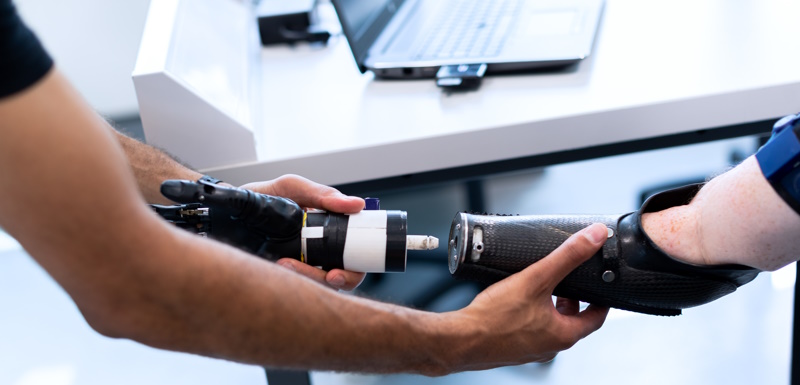Breaking Down the Lifespan of a Prosthetic and Where to Find Prosthetics Near You in Overland Park
Prosthetics and orthotics are a significant investment from both a financial and utilitarian standpoint. According to Howmuchisit.org, patients without insurance should expect to pay between $6,000 to $100,000 for a prosthetic leg. Patients with insurance, of course, should expect to pay significantly less.
The price of a prosthetic device directly correlates with the quality of its design and materials, and the type of technology it uses. For instance, certain prosthetic leg models feature a microprocessor in the knee joint and are made of stronger materials that are resistant to wear.
Naturally, this begs the question, “How often will my prosthetic device need to be replaced?”
Many experts who have weighed in on the subject estimate approximately every three to five years. However, there are several factors that can shorten and extend the lifespan of a prosthetic device. Once we break those down, we’ll provide some tips on how to care for your prosthesis along with where to find prosthetics near Kansas City.
Factors that Affect the Lifespan of a Prosthetic Device
Considering that prosthetic devices are a wearable solution intended to be used daily, they will be exposed to a significant amount of wear and tear over the years. The following list highlights the main factors that affect how long a prosthesis will last:
- The quality of construction. A high-quality prosthesis lasts longer.
- Type of prosthesis. A heavily used prosthetic device such as a foot will likely not last as long as a hand or arm.
- A change with the patient. The residual limb volume can change enough to the point that a new prosthetic device is needed. Significant weight loss or weight gain can also play a factor. Further, young patients with an amputation will need to replace their prosthetic device as their bodies grow and develop.
- The socket of the prosthetic limb has become compromised or broken beyond repair.
- The prosthetic limb is experiencing delamination, meaning the materials are fracturing into different layers.
- The prosthetic limb has liner issues, meaning the barrier between the patient’s skin and the prosthetic socket has become compromised.
- The patient has new activity goals, which means they’ll likely need a higher functioning prosthetic limb to support their activities of daily living or increased functional level.
Obviously, the goal of any patient is to get the most out of their advanced prosthetics and orthotics. Patients should be mindful of quality when searching for prosthetics near Kansas City.
Best Practices for Maintaining Your Prosthetic Limb
There are several things a patient can do to ensure they get the most out of their prosthetic limb. Refer to the following list of best practices:
- Wash the amputation site of your limb at least once per day with water and mild soap. Make sure your limb is completely dry before inserting it into your prosthetic device. Moisture may cause harmful bacteria or fungus to grow within the device.
- Wash every part of the prosthetic limb that makes direct contact with your skin. Follow the manufacturer’s cleaning instructions closely. NEVER use unknown chemicals or abrasive cleaners.
- Never wear a prosthetic device to bed.
- Always examine your prosthetic device for damage and parts that may be loose. Contact your certified prosthetist immediately if you suspect there’s an issue with your device. Never try to repair the device yourself.
- When wearing a prosthetic leg, always be sure to wear appropriate shoes with the correct heel height.
- Never submerge a prosthetic limb in water. If the limb gets wet, dry it as soon as possible.
- Always ensure your prosthetic limb is properly stored when not in use.
Patients who follow these best practices will get the most out of their prosthetic devices. However, it’s worth noting that no prosthesis lasts forever. Your prosthetist will be happy to inspect your current device to determine if it’s time for an upgrade.
How to Find Prosthetics Near You in Kansas City
As the leader of advanced prosthetics and orthotics in the Kansas City area, Cotton Orthotic & Prosthetic Associates works with a wide variety of patients to find a customized solution that’s perfect for them.
For those who are scheduled for an amputation and have yet to speak with a certified prosthetist, we encourage you to contact our practice for a consultation. During your appointment, we will walk you through what to expect, your prosthetic options, and provide a timeline for your recovery and rehabilitation.
Finding the right prosthetics near you is an important step on your journey, and the professionals at Cotton Orthotic & Prosthetic Associates are ready to take it with you. Use the contact form on our website or call (913) 338-2672 to speak with our scheduling department.







